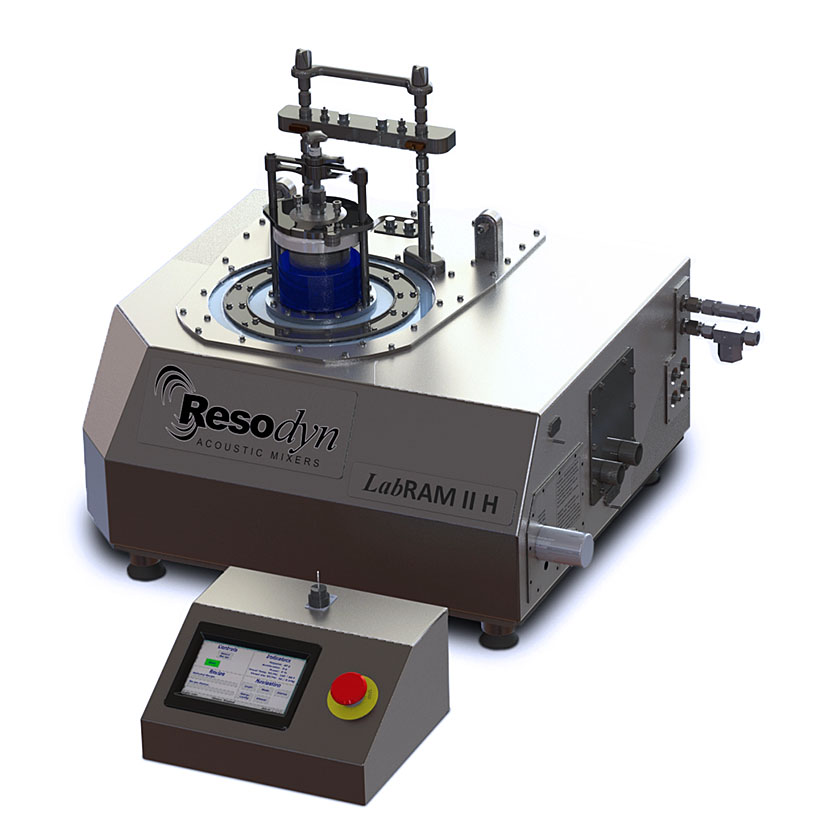
BUTTE, MT – Resodyn Acoustic Mixers announced the release of their hazardous environment, developmental mixer, the LabRAM™ II H. The second generation application of ResonantAcoustic® Mixing (RAM) technology introduces significant benefits to commercial and defense industry customers who rely on the core RAM technology for high quality and low cost mixing of hazardous materials.
Since its introduction to the energetics marketplace in 2007, RAM mixers have become the processing technology of choice at many government and commercial facilities. The technology allows users to employ intense, low-frequency acoustic mixing at up to 100g’s of acceleration without the several inherent issues associated with the use of conventional mixing technologies.
“LabRAM II H inherently changes the way a user thinks about processing and mixing,” according to Resodyn President and CEO, Lawrence Farrar. “The innovative performance, coupled with features specific to energetic environments, allows facilities to realize the benefits of RAM technology in a more efficient, safe, and productive manner.”
Designed around Dynamic Energetic Requirement
The LabRAM II H is designed to respond robustly to energetic users’ dynamic requirements. LabRAM II H’s new features are numerous, with double the capacity of previous LabRAM models. Now up to 2.2 pounds, LabRAM II H provides manual or automatic/programmable vacuum operation, onboard machine cooling capability, redundant grounding of all components, temperature monitoring, and control and data collection of the mixing vessel contents. In addition, every LabRAM II H system is provided with a laptop based Human Machine Interface (HMI) that provides for remote operation from up to 2.5 miles. Customers requiring Class I Div 1 and Class II Div 1 will find the LabRAM II H meets the specifications for hazardous environments.
Integrated Component Design
The fully integrated LabRAM II H houses all electronic, power and control hardware onboard, eliminating the need for a separate control component. The unit is operable with or without the optional acoustic housing, and all enclosure and housing materials are stainless steel.
Learn more about the LabRAM II H here.
